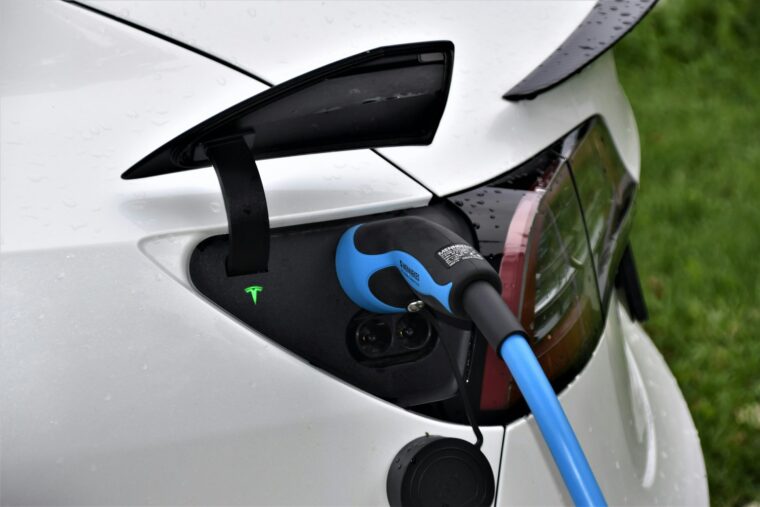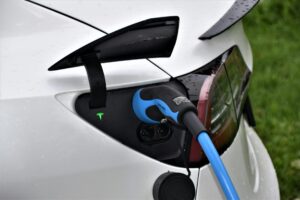
A federal program with a long name is in the process of allocating $5 billion to states for the installation of electric vehicle charging stations. The National Electric Vehicle Infrastructure Program (NEVI), administered by the Federal Highway Administration, is creating hundreds of contracting opportunities. The funding comes from the $1.2 trillion Bipartisan Infrastructure Bill passed by Congress, and it is available to every state.
Here’s how the program works – a local host and an EV charging station installer partner to apply jointly and request funding for EV charging projects in specific locations. The site host owns, operates and maintains the charging equipment. The private sector installer is solely responsible for installing the equipment and ensuring it operates correctly. The site host benefits from the acquisition of a profitable EV fueling station, which attracts customers and motorists, while the installer benefits from the value of the installation contract. Motorists with electric vehicles will soon find charging stations much more available.
Installers usually conduct work on multiple sites and one installer of EV charging infrastructure in Ohio recently received more than $80 million for equipment installations at about a dozen sites. States are on different timelines for awarding this type of funding but almost every state has funding to allocate through 2026.
Photo courtesy of Waldemar on Unsplash.
There are strict guidelines for officials as to how the funding is allocated. Each state must build out or designate Alternative Fuel Corridors (AFCs). This network will be the priority for funding because it represents roadways where EV charging needs will be the greatest. According to federal guidelines, the corridors must have charging stations at least every 50 miles along the designated routes. Additionally, each station must provide at least four fast chargers capable of simultaneously charging four EVs at 150 kW. Once the prioritized routes have been served, the funding will be available for other locations.
Texas is the largest NEVI state, with a total of $407 million in funding to build out 3,615 miles of EV charging corridors. Texans were responsible for somewhat staggering numbers of electric vehicle purchases in recent years. In five years, electric vehicle registrations in the state rose from 18,000 to 105,000. However, the installations along the state’s Alternative Fuel Corridors are emerging somewhat slower than expected. The Dallas and Houston areas have more EV charging infrastructure than other areas, but the Texas Department of Transportation recently targeted other areas for first-round funding awards. The city of Round Rock will begin the planning phase in July, backed by over $86 million in funds for 2024. West and South Texas cities were also granted funding, and it appears that communities in designated county seat locations will soon seek private sector partners to install EV charging stations.
California is the recipient of the second largest allocation of NEVI funds, with $384 million to spend on the state’s EV infrastructure by 2026. With the first round of awards already allocated, California is preparing to begin the second round of NEVI awards, which will result in the release of proposal solicitations. The California Energy Commission and the California Department of Transportation are collaborating to administer the NEVI program, and currently, they are collecting public input for the second funding phase. The anticipated release of the new funding will also result in project proposal solicitations. While the first round of NEVI funding was restricted to designated priority areas of the state, the second round will reach other areas of the state.
New York, of course, is one of the larger NEVI states, but the available funding is somewhat less. Approximately $175 million will be allocated for charging infrastructure by 2026. By early 2025, the state will be contracting with private sector partners for EV charging stations. Currently, state leaders are contracting with agencies, including the New York Power Authority, for the initial phases of NEVI projects. That effort is focused on installing charging stations along major highways, and it will be completed by the end of 2024. The following engagements will seek public-private partnerships for EV installations.
The state of Indiana received about $100 million in NEVI funding to support the state’s development of an EV Infrastructure deployment plan. A second phase of the plan will begin this September to procure partners to install EV charging stations in high priority areas that have not yet been addressed. The last phase in Indiana implemented stations in areas with high daily traffic and utility readiness. Now, projects will be prioritized near disadvantaged communities, travel destinations and locations that maintain the geographical balance of stations across the state.
The state of Missouri was allocated $98.9 million in NEVI funding for EV infrastructure. Soon, solicitation documents will be released seeking private sector partners. The state plans to have proposals reviewed and grants awarded in time to start the deployment of the new charging stations by 2025. Electric vehicle ownership is trending upward in Missouri and projections are that 5.02% of all registered vehicles in Missouri by 2035 will be for electric vehicles. Missouri plans to build 1,184 miles of electric vehicle charging infrastructure by 2027 to accommodate this anticipated growth of electric vehicle ownership.
While federal funding jump-started the attractiveness of EV charging infrastructure, every trend indicates increasing demand for this type of infrastructure throughout America. Almost every type of public transportation is moving to electrification, and individual purchases of electric vehicles continue to create a high demand for EV charging stations. Not only will there be thousands of public sector contracting opportunities for EV installers, but private sector restaurants, tourist sites, hospitals, shopping areas, universities and other locations will represent just as many new contracting opportunities.
About the Author:
As President and CEO of Strategic Partnerships, Inc., Mary Scott Nabers has decades of experience working in the public-private sector. A well-recognized expert in the P3 and government contracting fields, she is often asked to share her industry insights with top publications and through professional speaking engagements.

